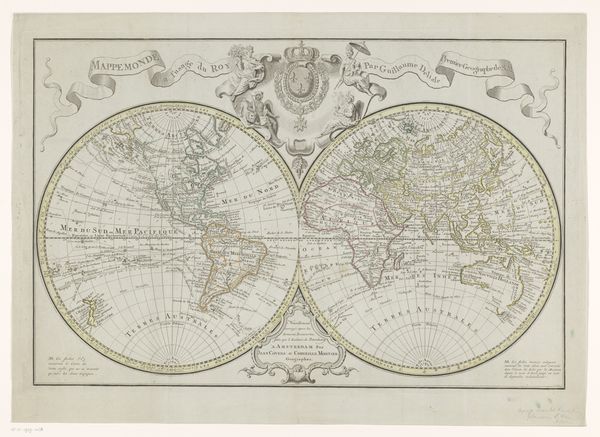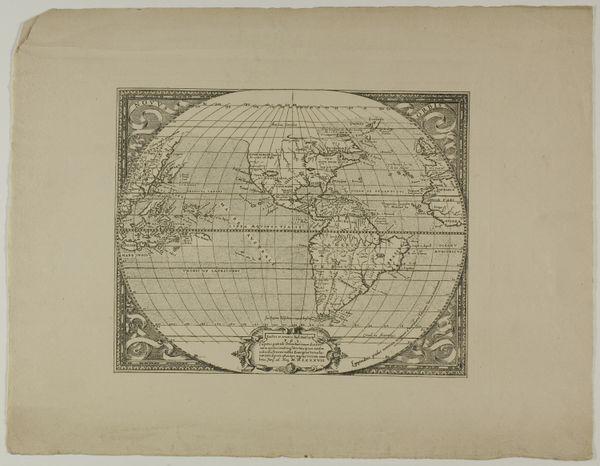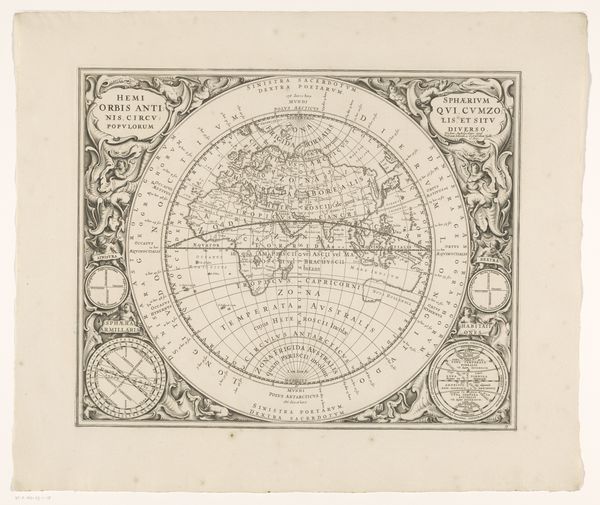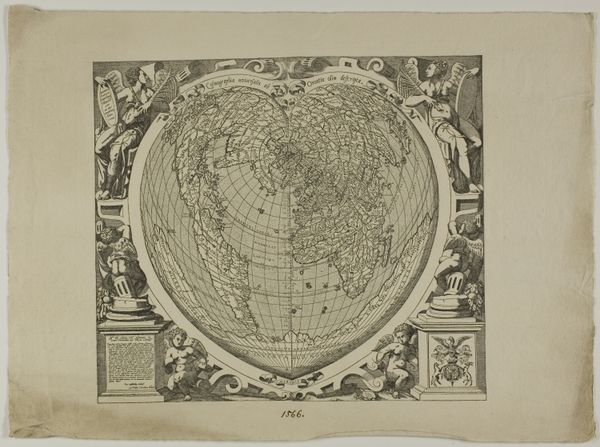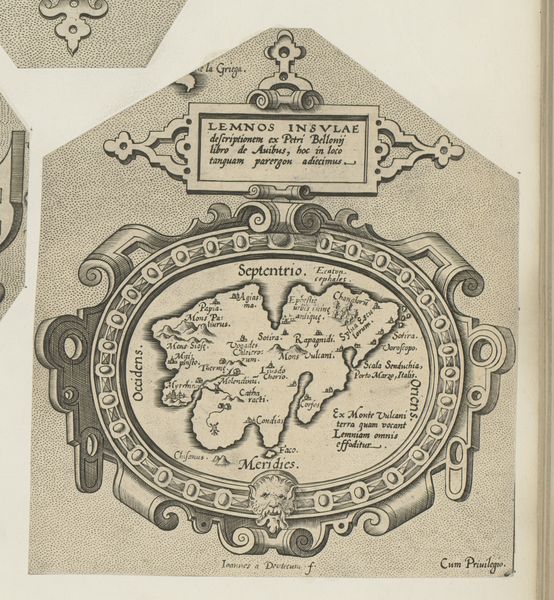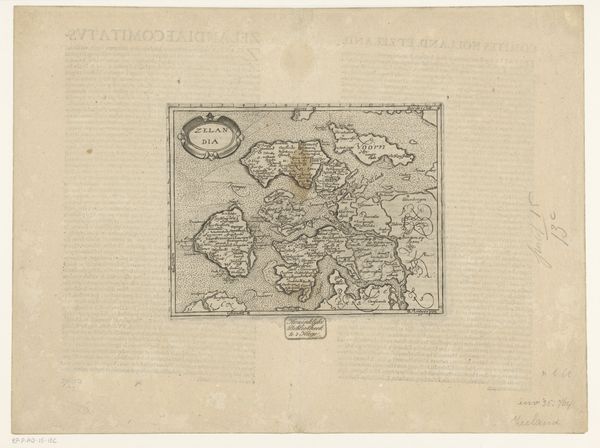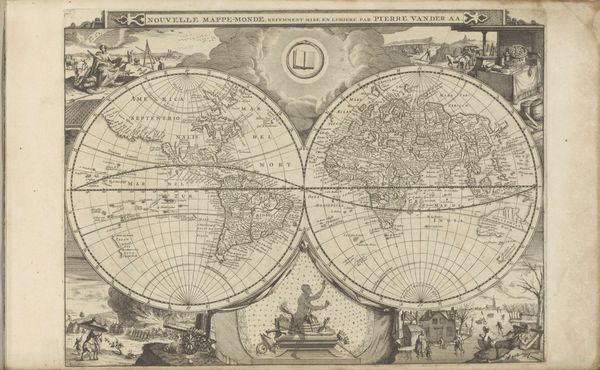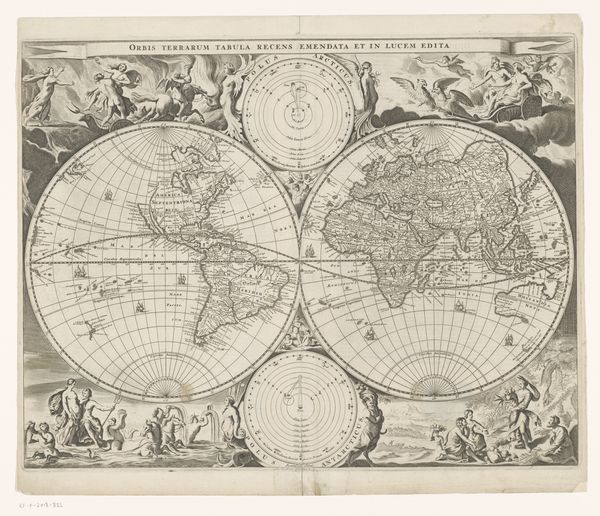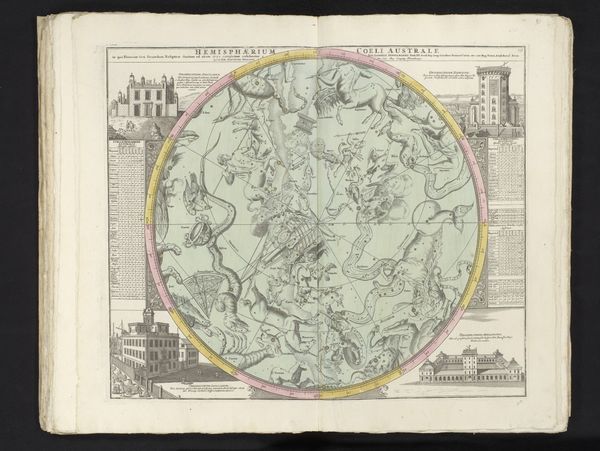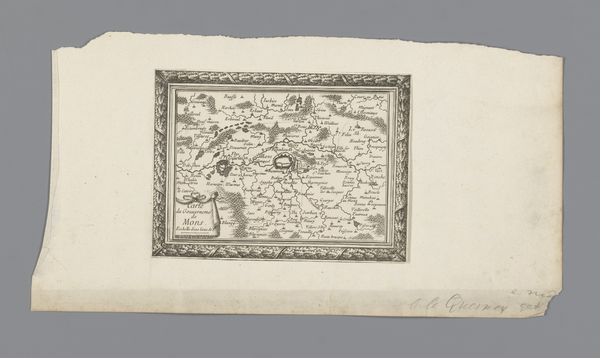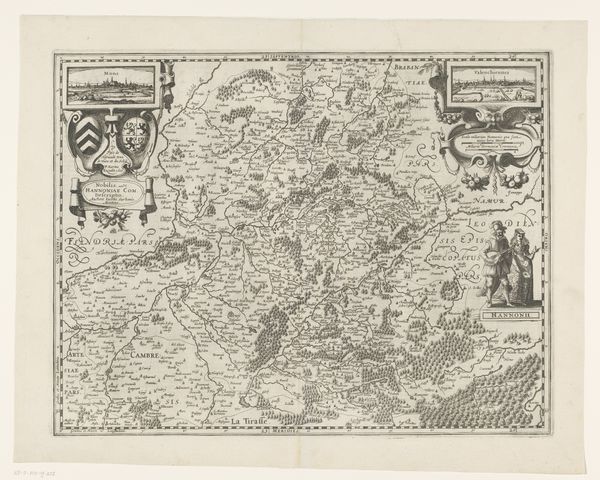
Kaart en voorstellingen van de gevechten in Brabant en Limburg, 1793 1793
0:00
0:00
print, engraving
# print
#
landscape
#
cityscape
#
history-painting
#
engraving
Dimensions: height 357 mm, width 430 mm
Copyright: Rijks Museum: Open Domain
Curator: What a fascinating print! This is "Kaart en voorstellingen van de gevechten in Brabant en Limburg, 1793," created in 1793 by Daniël (I) Veelwaard. It’s currently held in the Rijksmuseum. The artist employed engraving to produce this highly detailed scene. Editor: My first impression is how skillfully the cartographic and pictorial elements are combined. The overall feeling is of both commemoration and perhaps subtle political commentary. What do you think is emphasized by having a war map embedded in a work commemorating combat? Curator: That's a astute question. Contextually, it’s vital to remember the turbulence of 1793, early in the French Revolutionary Wars. The placement of the map at the center shows how profoundly geography shapes the battles—emphasizing Dutch investment in particular territorial integrity and regional identity. Editor: The framing around the central map draws the eye towards localized episodes of the battles; from left to right they might signal attack, refuge, and an end to fighting—does this suggest themes within each scene? Are there recurring figures? Curator: It’s suggestive of how visual markers tie to history and political interpretation. I agree; these supporting images aren't random additions; instead they contextualize the map in distinct temporal narrative cycles, making the argument the region survived multiple points of conflagration and cultural upheaval, a testament of strength. Editor: There are definitely emblems that signal what side prevailed—though this memorial does not fully convey who won, in its emphasis on perseverance! Even so, in viewing these symbols collectively in relation to the scenes, one can better identify patterns related to authority and dominion during wartime—I'd also emphasize the flags. What did it signify at the time for artists to weave emblems that have the potential to signal loss, resistance, or triumph into commemorative pieces like this one? Curator: That's where you tap into collective memory. An artwork becomes part of public discourse and shapes the viewer's present comprehension. A symbol displayed may not accurately convey an entire scope of the conflicts presented; instead, such images could invite further participation in civic discussions, questioning interpretations of shared history and power dynamics! Editor: It becomes clear how deeply symbols work through time. Curator: Precisely! What initially strikes you about it reveals the complexity through time. Editor: And the social memory woven into these representations—remarkable.
Comments
No comments
Be the first to comment and join the conversation on the ultimate creative platform.
